School of Nursing moves into new home
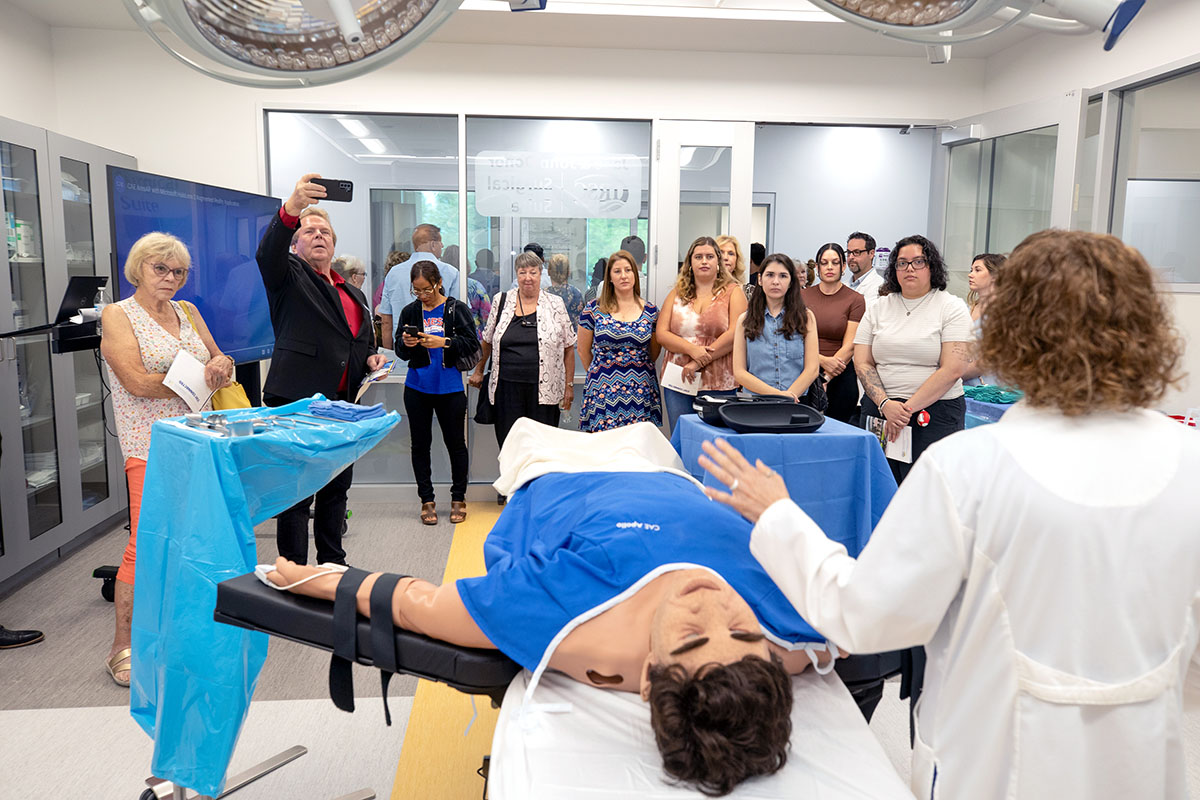
Guests tour the new surgical suite during the grand opening of the Indian River State College School of Nursing at the Pruitt Campus in Port St. Lucie. It is part of the expanded program’s high-fidelity hospital-like simulation center offering students the latest in real-life educational experiences. INDIAN RIVER STATE COLLEGE PHOTOS
Simulated hospital gives nursing students a taste of real life
BY SUSAN BURGESS
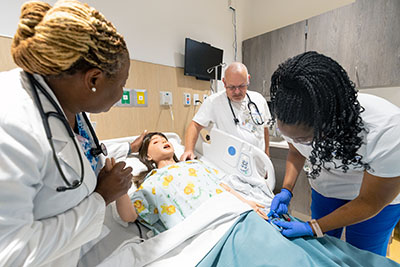
Students work with a simulated patient to hone their nursing skills.
The ominous sound of a Code Blue alarm sends student nurses flying to a patient’s bedside in the simulated hospital on Indian River State College’s Port St. Lucie campus. They gather around the bed, working swiftly to save the “patient” who is struggling to breathe after a heart attack.
Fortunately, the figure receiving all this medical attention is a teaching mannequin — controlled by instructors from another room. Brimming with advanced electronics, it can be made to look and respond like a real person in need of a variety of nursing care. Its appearance can be altered to simulate different conditions, including wounds from accidents. Everything the students do is caught on video to be reviewed later. Instructors go over students’ decisions with them, asking why they did or didn’t try something — much like football players and coaches reviewing game film.
The new simulated hospital is part of an expansion of IRSC’s School of Nursing, which has just moved into its new home on the Pruitt Campus in Port St. Lucie. The college used almost $15 million in funding from the state to move the school from the college’s main campus in Fort Pierce. The 50,500-square-foot facility opened to students in August. Unlike any other teaching facility for nurses in the area, its immersive curriculum with the newest technology provides students with experiences they would otherwise only get in a real hospital.
“The new simulation lab is very interactive, so you feel more prepared before you work with actual patients,” says Dominique Diago, a recent graduate from Port St. Lucie who just started her nursing career at HCA St. Lucie Medical Center. She’ll continue her training at the hospital, as she gets used to her new duties, then transition into working on her own as a registered nurse.
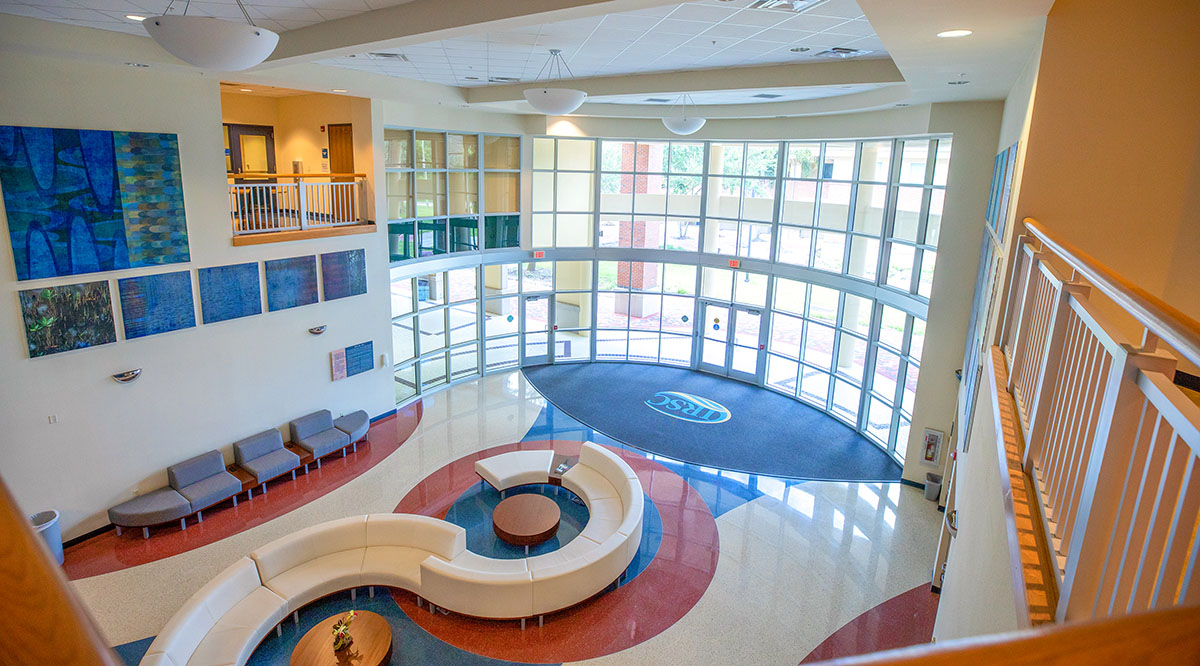
IRSC used state funding to build this 50,500-square-foot classroom building on its Pruitt Campus in Port St. Lucie. The expansion of the nursing programs will help to combat the shortage of nurses in the state.
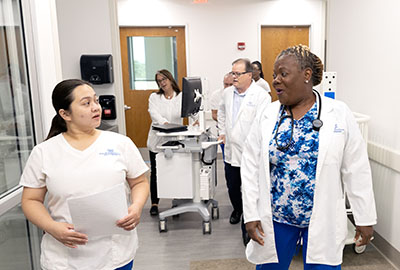
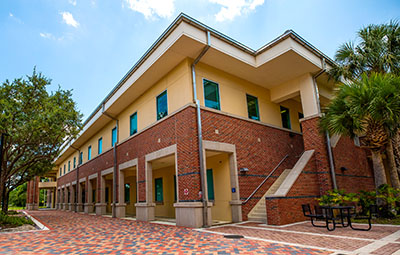
EXPANDED OPPORTUNITIES
The campus’ hospital-like facility — also called a lab — includes rooms for patients, a surgical suite, a room that can be used for behavioral health or other treatments, and two operating rooms, according to Nursing School Dean Patricia Gagliano. Student nurses hone their skills in two simulated emergency/intensive care rooms, two labor and delivery rooms, a pair of pediatric rooms, and two medical/surgical rooms, similar to the floor where Diago is now working.
Additionally, two nursing stations feature a call-button system, electronic medical-records system and a medication dispensing system, essentials for today’s hospitals. They even have a home apartment setup, where students learn about in-home and hospice care for patients and their families.
“I think students will feel better prepared when they start work in a hospital,” Diago says. “When you go to work in the hospital, you don’t get to perform all the many skills you can learn in the lab.” As a new nurse, she has a mentor helping her. She’s also surrounded by her former classmates at the hospital who have become a close and supportive group.
Diago, 26, originally planned to be a teacher and even has her bachelor’s degree in education from the University of Central Florida. But during the pandemic, seeing what doctors and nurses were going through, she says, “My heart was telling me they needed help and I could be a great nurse.” So she applied to nursing school at IRSC. Eventually, she hopes to combine nursing with becoming a mentor herself, helping nurses who are just beginning their careers.
The nursing school “was the hardest two years of my life,” she says, “but I really loved it.”
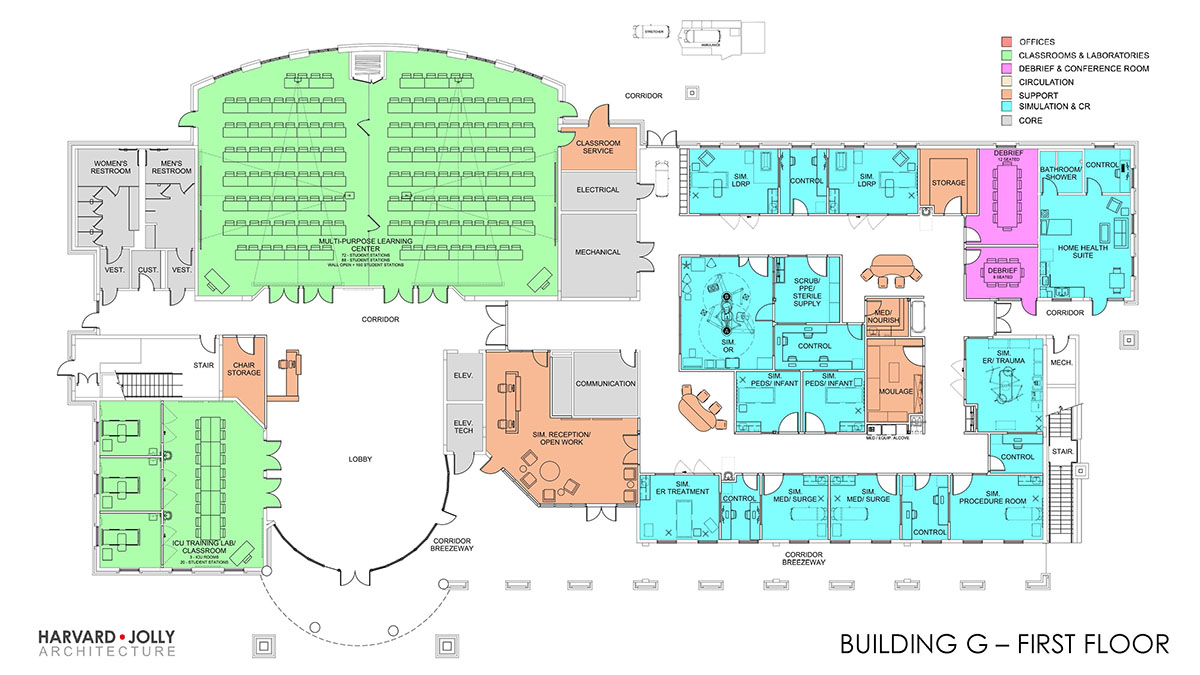
The floor plan of the G Building shows the rooms in the simulated hospital and the lab/lecture hall.
MORE CARE NEEDED
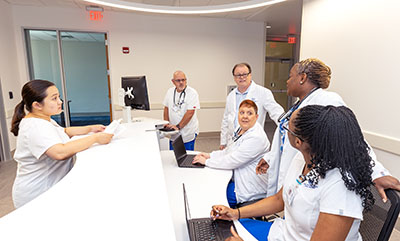
One of two nurses’ stations resembles a real one you might find in any hospital.
Before the fall term started, student Noah Sloan, 24, says he looked forward to his move from the IRSC Massey campus in Fort Pierce to the Port St. Lucie campus. “I’m a hands-on learner,” he says. “It really makes a big difference in how well I learn. This is a big upgrade with all the new technology.” During the summer he took a job at HCA St. Lucie Medical Center to get more experience before he started at the new campus in August. “I wanted to learn more skills,” he says. He hopes to get his bachelor’s degree, followed by a master’s. His goal is to work in an intensive care unit.
Sloan, from Fort Pierce, says he toyed with going into nursing when he was in high school but decided against it. Back then, he says, “I just didn’t want to be in school anymore.” A bad motorcycle accident turned his life around. He spent a long time recovering in a hospital where he noticed, “The nurses made my stay so much better. I realized I wanted to do what they did for patients. It was the difference between night and day in the way I thought about it.
“I want to bring that caring that I had to other people,” he says.
In 2021, the Florida Hospital Association and the Safety Net Hospital Alliance of Florida published an estimate of supply and demand for the state of Florida and the national nursing workforce. It projected that, by 2035, Florida’s projected statewide shortfall is expected to be 59,100 fewer nurses than needed.
That statistic adds urgency to IRSC’s goal of increasing the number of registered-nursing graduates to 300 a year and practical-nursing graduates to 60 annually, by 2026. To help them reach those numbers, the Port St. Lucie facility expands classroom capacity from 250 to more than 480 students. The new lab has 160 seats. According to Gagliano, three new instructors have been hired for the fall term and the school plans to hire a total of 12 new instructors to work with students in the expanded space.
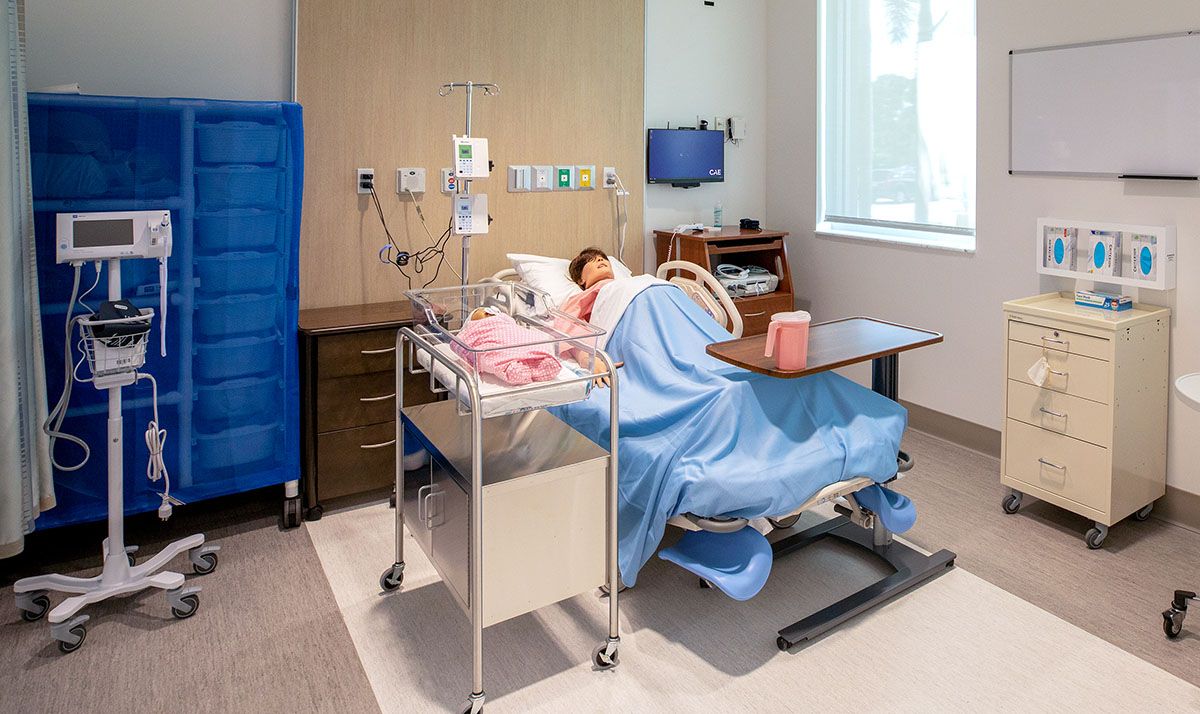
A simulated pregnant patient lies in a room with an infant mannequin. Both contain advanced electronics enabling them to act like real humans.
HISTORY OF GROWTH
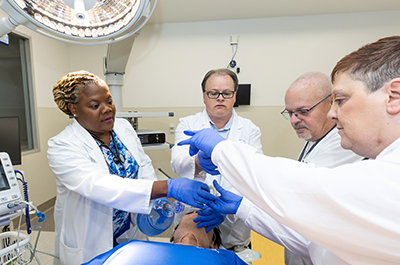
Nursing students practice with instructors in a simulated operating room, learning procedures they will use on real patients.
The college’s nursing program dates back to 1965, when it opened with 26 students. At that time, IRSC was Indian River Junior College and just five years old. For the next 47 years, it was able to offer two-year associate degrees, including the one nursing students need to become registered nurses. In 2008, it was granted four-year college status by the state and renamed Indian River State College. The next year, the school began offering a four-year Bachelor of Science in nursing.
“Over the past 58 years we’ve graduated more than 6,000 registered nurses,” Gagliano says. “The expansion helps to fulfill the college’s mission to help create a highly qualified and diverse workforce to support the immediate needs in the communities it serves.”
Most of the new nurses are snapped up by local hospitals and doctors’ offices, although they can easily find well-paying jobs with good benefits anywhere.
“I’m ecstatic that we received the state funding for the expansion,” Gagliano says. “Before, it was heart-wrenching when we could not accept everyone who was qualified to be in the program. It’s so rewarding to be there when they are accepted, while they are learning and when they graduate.”
For a look at Indian River State College through the years visit https://irsc.edu/irsc60/historical-timeline.html
See the original article in the print publication
Treasure Coast Business is a news service and magazine published in print, via e-newsletter and online at tcbusiness.com by Indian River Media Group. For more information or to report news email staff@tcbusiness.com
